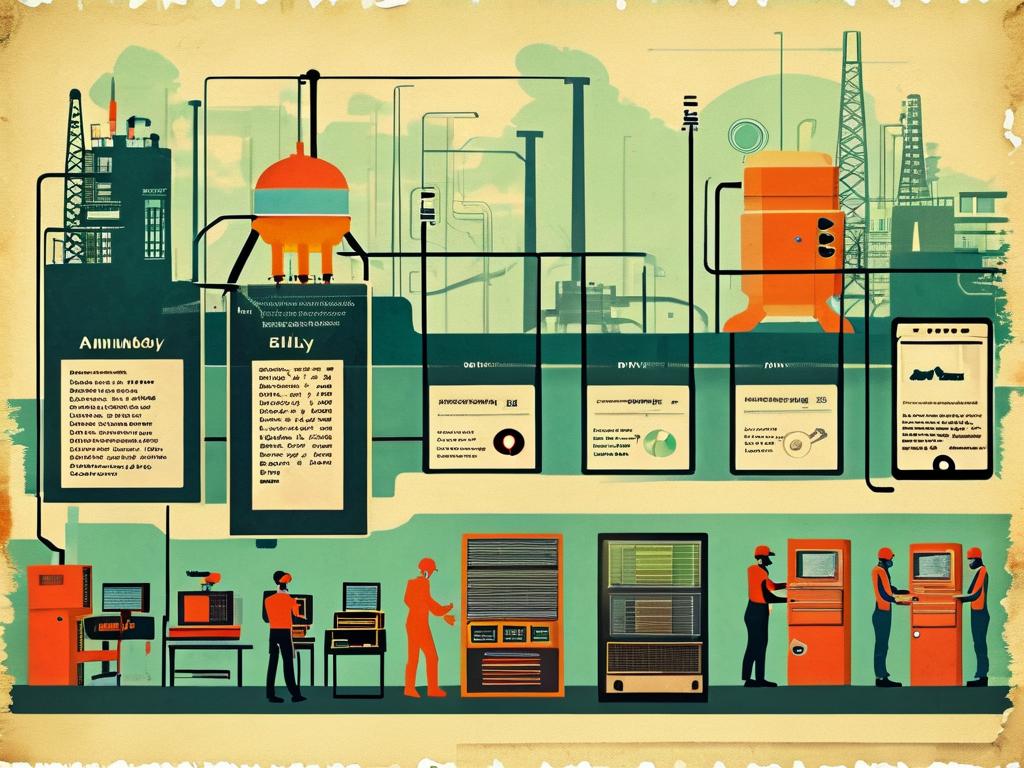The concept of automated deployment has revolutionized software development, enabling teams to deliver applications faster, reduce human error, and maintain consistency across environments. To understand its significance, we must explore its historical roots, which span decades of technological advancements and shifting industry demands.
Early Days: Manual Deployment Challenges
In the pre-internet era of the 1960s–1980s, software deployment was a labor-intensive process. Programs were often written for specific hardware, and installing updates required physical media like tapes or disks. System administrators manually configured servers, a time-consuming and error-prone task. For large organizations, deploying software across multiple machines could take weeks, with inconsistencies arising from human oversight. This era highlighted the need for standardization and repeatability.
The rise of personal computers and client-server architectures in the 1990s exacerbated these challenges. Enterprises now managed distributed systems, and manual deployment became unsustainable. Early attempts at automation emerged through shell scripts and batch files, but these were fragile and lacked cross-platform compatibility.
The Birth of Scripting and Configuration Tools
The late 1990s and early 2000s marked a turning point with the advent of scripting languages like Perl and Python. These tools allowed developers to write deployment scripts, automating repetitive tasks such as file transfers and server configurations. However, scripts were often custom-built for specific projects, limiting scalability.
This period also saw the rise of configuration management tools. CFEngine (1993) pioneered infrastructure-as-code principles, enabling administrators to define system states declaratively. Chef (2009) and Puppet (2005) expanded on this idea, using Ruby-based DSLs to automate server provisioning. These tools reduced manual intervention but required significant expertise to implement.
Continuous Integration and the Agile Movement
The Agile Manifesto (2001) emphasized iterative development, pushing teams to release software faster. This shift exposed bottlenecks in deployment processes. Continuous Integration (CI), a practice popularized by Martin Fowler in the early 2000s, encouraged developers to merge code into a shared repository multiple times daily. Tools like CruiseControl (2001) automated build and test processes, laying the groundwork for deployment automation.
By the mid-2000s, cloud computing began reshaping infrastructure. Platforms like Amazon Web Services (AWS, launched in 2006) allowed teams to provision virtual machines programmatically. This innovation made environments more dynamic, necessitating automated deployment to keep pace with scalable resources.
The DevOps Revolution and CI/CD Pipelines
The term DevOps emerged around 2009, bridging the gap between development and operations teams. Central to this philosophy was automation, particularly in deployment. Jenkins (2011), an open-source automation server, became a cornerstone for CI/CD pipelines, enabling teams to automate builds, tests, and deployments.
Continuous Delivery (CD), introduced in the 2010 book Continuous Delivery by Jez Humble and David Farley, advocated for deploying code to production at any time. This required robust automation tools to handle testing, environment setup, and rollbacks. Companies like Netflix and Google pioneered "chaos engineering" and canary releases, relying heavily on automated deployment to ensure reliability.
Containers and Cloud-Native Technologies
The 2010s witnessed another leap with containerization. Docker (2013) standardized application packaging, allowing software to run consistently across environments. Orchestration tools like Kubernetes (2014) automated container deployment, scaling, and management, making microservices architectures feasible.
Cloud providers further accelerated automation through serverless computing (e.g., AWS Lambda, 2014) and Infrastructure-as-Code (IaC) tools like Terraform (2014). These technologies abstracted infrastructure management, enabling developers to focus on code while deployment processes became fully automated.
Modern Trends and Future Directions
Today, GitOps-a methodology that uses Git repositories as the source of truth for infrastructure and deployments-is gaining traction. Tools like Argo CD and Flux automate synchronization between Git commits and production environments, enhancing traceability.
Artificial Intelligence (AI) is also entering the automation landscape. AI-driven tools predict deployment failures, optimize resource allocation, and even generate deployment scripts. As edge computing and IoT expand, automated deployment will adapt to manage distributed systems at unprecedented scales.
Automated deployment has evolved from rudimentary scripts to AI-enhanced pipelines, driven by the need for speed, reliability, and scalability. Its history reflects broader technological shifts: the rise of Agile, cloud computing, and DevOps. As software systems grow more complex, automation will remain indispensable, continually redefining how we build and deliver technology.









